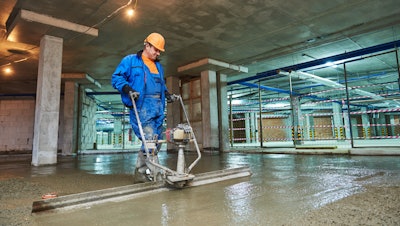
For concrete contractors, screeds are an essential purchase and a critical tool for providing the smooth, level finish for concrete work. By carefully considering the screed types available, contractors can see maximum productivity from their investment.
The most common screed categories include roller, truss, laser, power and hand screeds. Each screed has unique features that, when aligned with project goals, can improve ROI. Here is a breakdown of the features and benefits of the most widely available screeds on the market today.
Hand Screeds for Low Cost
Classic hand screeding, which traditionally uses a wooden board, might cut it for the one-off small concrete job, but any serious contractor knows the life-long pains that come from years of stooping over a heavy board and sawing it back and forth along forms to screed concrete. Although the materials have evolved over time from hefty two-by-four lumber to lighter-weight aluminum alloy bars, the design and method has largely remained unchanged.
In addition to the back-breaking labor, hand screeding methods using boards require the skill of an experienced professional to remain true to grade and achieve consistent results since there’s no mechanical assistance. This can prove challenging on large pours, even with decades of experience.
 Wacker Neuson
Wacker Neuson
Floating or Power Screeds for Single Operators
In what could be considered an assisted hand screeding method, power screeds, also known as wet screeds, consist of an engine or electric battery-powered motor and an extended handle placed in the center of a traditional board/blade that is in contact with the concrete. Power screeds use vibration to help the blade level the concrete.
These require a lot of skill and experience by the operator.
Although more ergonomic and efficient than traditional hand screeding, the float/power screed requires the operator to stand in the poured concrete while screening. The timing of your slump window is critical to make sure you work the concrete at the right time. The vibration has similar benefits and drawbacks to that of the truss screed. Due to their one-man operation and center support, manufacturers typically limit the blade length of blade to around 15 ft.
Compared to working the slab with a good 2x4, the float/power screed can be an exceptional backsaver and crews can find an increase in productivity.
Roller Screeds for Versatility
 Battery-powered roller screeds provide a convenient and maneuverable screed option. Some even use the same rechargeable 60-volt lithium-ion battery found in common handheld power tools.Curb Roller Manufacturing
Battery-powered roller screeds provide a convenient and maneuverable screed option. Some even use the same rechargeable 60-volt lithium-ion battery found in common handheld power tools.Curb Roller Manufacturing
The roller screed’s detachable design also makes for a highly portable option. Some manufacturers even offer linkable pipe sections to increase portability and versatility. General features like a 3-way adjustable and lockable handle for improved ease of operation and a kickstand to keep the drive head and handle out of the concrete allow crews to quickly adapt to various jobsite needs. Contractors have four different power options to choose from: battery, corded, hydraulic, and gas-powered.
Battery-powered roller screeds are easily maneuverable and can handle pours up to 22 ft. long. These versatile machines can be especially useful for contractors working in basements or factory settings indoors, at farms, or in communities in remote locations.
Depending on the slump and pipe length, a contractor can screed off 1,800-2,500 sq. ft. of concrete with just one fully charged battery. Since the battery operation provides fume-free screeding for those working in any closed-off environment where fumes may be a concern, no additional power source such as gasoline, hydraulics, or a generator is required. That means fewer transportation needs, reduced setup time, and no cords or hoses in the way. Some battery-powered roller screeds can also provide cross-platform use by utilizing the same rechargeable 60-volt lithium-ion battery that is found in common handheld power tools.
For special projects such as circular pours, battery-powered roller screeds provide a convenient single push-button directional change. This allows contractors to easily change their screeding direction to avoid cold joints or other structural flaws that can occur with an uneven cure.
Corded electric roller screeds enjoy many of the same benefits and capabilities as battery-powered roller screeds. They are fume-free for indoor jobs and some provide a single push-button directional change for screeding unique pours. With a nearby outlet or reliable generator, contractors can have the reassurance and convenience of seemingly endless power.
While enjoying the convenience of power, contractors must consider proper care to ensure the cords don't become tangled, unplugged, or damaged while on the jobsite. And relying on a separate power source, like a generator, can come with its own worries. That can include staying on top of fuel availability, general maintenance, or fume concerns.
 Hydraulic-powered roller screeds have the power to move up to six inches of concrete along a pour while the operator remains in a standing position. Additionally, they accept any 6-inch tube length up to 30 feet while some manufacturers also offer custom drums made to various job specifications such as sidewalks, parking lots, residential streets, large highway ditch liners and more.Curb Roller Manufacturing
Hydraulic-powered roller screeds have the power to move up to six inches of concrete along a pour while the operator remains in a standing position. Additionally, they accept any 6-inch tube length up to 30 feet while some manufacturers also offer custom drums made to various job specifications such as sidewalks, parking lots, residential streets, large highway ditch liners and more.Curb Roller Manufacturing
Hydraulic-powered roller screeds have the power to move up to 6 in. of concrete along a pour while the operator remains in a standing position. Additionally, most hydraulic roller screeds accept 6-in. tube length up to 30 ft. while some manufacturers also offer custom drums made to various job specifications such as sidewalks, parking lots, residential streets, large highway ditch liners, and more.
Like corded screeds, hydraulic screeds require a separate power source. Look for a manufacturer that provides a portable hydraulic power pack to match their hydraulic screed’s exact specifications. With this option, contractors don’t have to tie up a host machine to power their hydraulic screed. To take on heavy-duty jobs, these are also generally heavier at 2-3 times the weight of battery- and corded roller screeds. Contractors should consider how to accommodate the additional weight before committing to these powerful screeds.
Gas-powered roller screeds have a similar setup as the other roller screeds but with a motor attached to the drive head. These screeds offer another option for contractors who typically screed large pours that require a longer pipe, often up to 30 ft. wide. The motor produces screeding power that rivals that of hydraulic screeds and offers a viable, familiar alternative for those preferring a gas engine.
More care is required as a gas-powered screed motor needs to be in an upright position to avoid gas and oil from leaking out. This can prove even more challenging due to the weight of the engine on the drive head. These screeds have location limitations as well, as they cannot be used indoors due to the exhaust and fumes from the engine. Engine vibrations present another area of concern. The high vibration from the engine can cause the throttle cable to slip and need continuous readjusting.
 The WSH-Series Vibratory Truss Screed from Multiquip.Multiquip Inc.
The WSH-Series Vibratory Truss Screed from Multiquip.Multiquip Inc.
Truss Screeds for Length
Truss screeds level off the concrete often featuring a vibration motor. These screeds are expandable and come in multiple sections that resemble a truss design to help maintain rigidity for longer widths, even beyond 60 ft. Due to this ability to screed such a width at the same time, truss screeds can be an excellent option for the larger jobs, like screeding an entire roadway, slabs-on-grade, bridges, and more.
Vibrations from a motor attached to the truss carry throughout the screed as contractors guide it on concrete forms, flattening and settling the concrete to remove trapped air, increase concrete strength and provide a smooth finish. However, due to the vibration, it is generally not recommended to utilize a truss screed on a slope. The aggregate in concrete tends to settle with vibration and unevenly dispersed aggregate can create spots of varying strengths that can result in structural flaws and damage over time.
Truss screeds can be powered by an engine or air, with the latter preferred for indoor jobs or tunnels when a combustible engine would be prohibitive.
Giving contractors the ability to expand the truss and screed blade needed for the project, it's common for truss screeds to come in sections of various lengths. Additional sections can be added to achieve a maximum width and some models may have limits. Best practices suggest selecting a screed width that allows a minimum of a 6-in. overhang past your concrete form.
 The Ligchine SCREEDSAVER ELITE with boom extended.Ligchine
The Ligchine SCREEDSAVER ELITE with boom extended.Ligchine
Laser Screeds for Extreme Precision
Laser screeds are growing in popularity for larger concrete pours and those that require a high degree of precision. This category of screed equipment can be found in various styles ranging from telescopic (boom), ride-along (drive-in), and lightweight machines. The screed’s laser arm ensures a precise, accurate, and evenly leveled surface while reducing the need for excessive labor. Some of the widest laser-guided boom screeds available on the market can have a maximum working width of 20 ft.
Both the truss and laser screeds will allow contractors to achieve high FL values for floors, however the truss screed would be depending on the forming system/bulkhead. Because of this, experts suggest to consider the laser screed instead of the truss for slabs with columns.
More on FL & FF Values
What are FF and FL numbers? Since it was introduced in the 1970s, F-numbers have proven to be useful in measuring and improving concrete floor flatness and levelness. With modern finishing equipment, achieving overall floor flatness and levelness has made it easy for flatwork finish.
Exceeding Specs on a Structural Slab-on-deck - Birdwell and Associates far exceeds the specified FF and FL numbers on a formed and shored 3-foot-deep concrete structural deck for the University of Alabama's engineering school.
The Limitations of F-Number Specifications - Contractors need to be cognizant of certain situations that make it difficult to achieve routine FF and FL requirements and know how to get those specifications changed to more reasonable requirements.
The Effect of Curling on Floor Flatness - F-numbers should be measured within 72 hours of floor finishing to best reflect the concrete contractor's efforts.
How to Finish Flatter Concrete Floors - Proper concrete finishing tools and techniques will help you increase your FF numbers so that placing very flat and super flat floors becomes routine
An average laser screeding work can range from to 130 to 220 sq. ft. of concrete in a single pass depending on the size of the machine and head—making this equipment a game-changer for the concrete industry.
Options can include a roller head, various widths, paver screed, front-drive tracks, or high-float wheels. However, the tracks are likely available for select models. Some modern screed heads can be replaced in minutes instead of hours - providing another time and labor savings at the jobsite.
Telescopic
- Standard head width range: 8 to 12 ft. 6 in. (some models include a travel distance for their screed heads, shorter and wider head options may be available for some models)
- Telescopic boom reach range: 12 ft. 5 in. to 50 ft.
- Machine weight range: 2,840 to 22,000 lbs.
- Some models are controlled by wireless remote control or ride-on operator
Ride-Along / Ride-On
- Head width range: 6 to 10 ft.
- Machine weight range: 1,107 to 1,775 lbs.
- Controlled by on-board control system
Lightweight
- Standard head width: 6 ft. 8 in. to 10 ft.
- Machine weight range: 546 to 1,280 lbs.
- On-board control
While laser screeds bring benefits including ease of use and reduced labor expenses, they can be costly and are powered by diesel or gasoline engines.
A Case for Quality
Jobs in a concrete season can vary as much as the tools themselves. Contractors should carefully consider the advantages of each type of screed, which screed will work best with the majority of their jobs, and how a screed will pair with existing support equipment as well as their crew’s skill level.
No matter the method, choosing a manufacturer that offers not just options, but high-quality construction, parts, and service will help limit problems to small, logistical inconveniences.
Always confer to your equipment's operations manual and follow all official safety guidelines.
About the Author
Seth Ulmer is the sales manager at Curb Roller Manufacturing. He joined the company after spending over a decade in the concrete and construction industries.


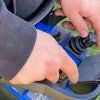
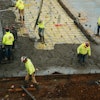
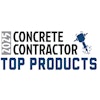

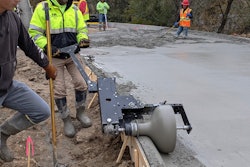
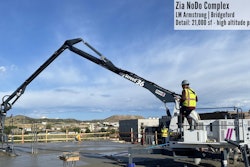
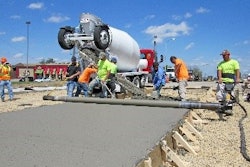

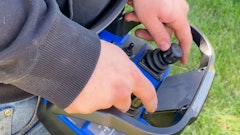


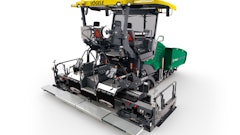
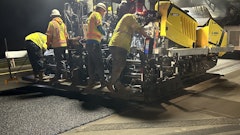

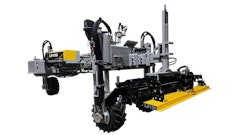
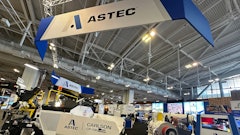

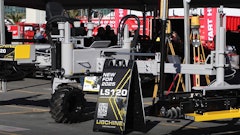
![Hj1y06a9 720[1]](https://img.forconstructionpros.com/files/base/acbm/fcp/image/2025/01/hj1y06a9_720_1_.67979fbd9d2cf.png?ar=16%3A9&auto=format%2Ccompress&fit=crop&h=135&q=70&rect=21%2C0%2C677%2C380&w=240)